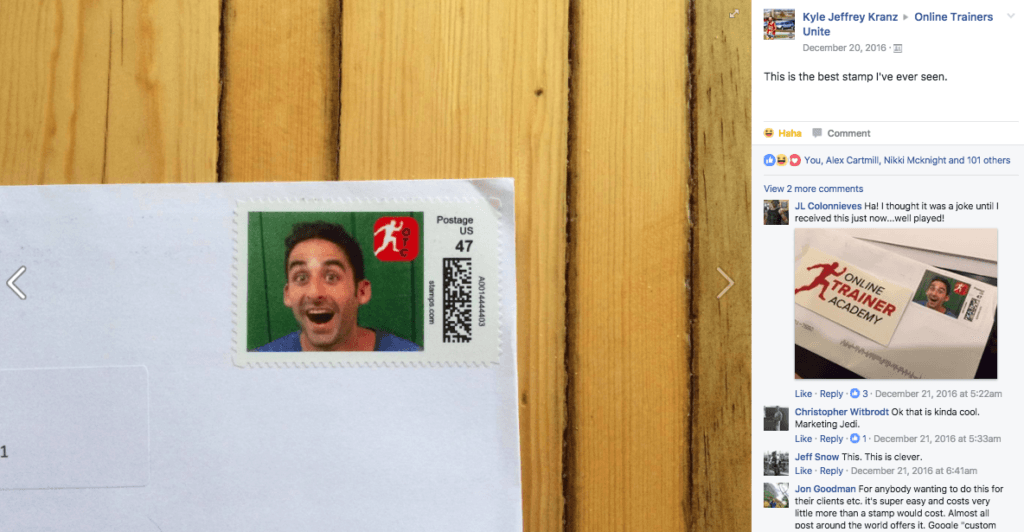If you want to make more money in the fitness industry, there are three ways to do so:
And the third? Well, I intentionally excluded the third reason from the list because it’s the most valuable and, ironically, the most ignored. I’m sure you’ve heard of it and understand why it’s important, but your time and attention might be too wrapped up in the “sexy” aspects of business to properly give it a chance. So, here it is:
The third way to make more money in the fitness industry is to increase the number of transactions per client.
That's why retention—keeping the clients you already have—is the most valuable part of your training business.
Retention comes from the strength of your client relationships. Keeping your clients for a long time is what great trainers do and struggling trainers ignore. It’s a simple equation:
Clients come for the training, buy for the people, and stay for the relationships.
When you keep clients longer, you can rest easier knowing you have committed income and don’t have to scramble for new clients all the time. This is powerful enough to help buy back your time and attention in order to focus on bettering yourself and career, improving your own well-being, or developing a business outside of training clients to create another income stream (or two, maybe three).
It sounds easy, but building a lasting relationship takes a long and thoughtful approach. Think about the people you share a deep connection with in your life. Do you feel this way toward someone because they did one thing that stands out? Or because they did a lot of small things over time to show how much they care?
In this article I'll talk about two ways to enhance relationships with clients: building rapport and giving gifts they actually care about.
How to build rapport with your clients
Building rapport isn't something you can do once and then cross it off your to-do list. It’s not a button you can push, or something you can automate or optimize. It’s purposeful. It's the way you make your client the center of your universe when you're training together.
In The Ultimate Sales Machine, Chet Holmes says you need to do these six things to establish rapport:
1. Ask great questions
2. Have a sense of humor
3. Commiserate
4. Be empathetic and care about them
5. Find common ground
6. Mirror
Let’s look at how you can apply each of them to personal training.
1. Ask great questions
Great coaches know that their job is not to give advice; it’s to ask questions. Your success depends on your ability to pull the real reason why your client wants to train. So often we hear the phrase “the customer is always right,” but frankly, it’s not true.
If you ask a client what his goal is, he might say to put on muscle. If he’s read a fitness magazine, he might even adopt the lingo and say “to get a shredded six-pack.”
Okay, but why does he want a shredded six-pack? If he digs deep enough, the reason is more likely that he wants to get laid and being more physically attractive can help. Well, that means the goal (or outcome) is getting laid, not getting the six-pack.
If we ask "why" across the board, the data are pretty convincing:

My point is that every trainee has a more hidden motive for wanting to get in shape. It’s your job to know what it is.
2. Have a sense of humor
The thing about humor is that everybody’s idea of comedy can differ, but that’s okay. As long as it’s not offensive or at someone’s expense, the point of humor is to make your clients feel more relaxed and connected, even if you think your jokes are terrible. Take Jeff, for instance.
Jeff was one of the instructors at Kilauea CrossFit in Kauai, where I spent a month this past winter. At the beginning of every session, he’d gather all class attendees to go over the day’s workout, which is pretty standard.
But before launching into his spiel about the workout, he’d break the ice with a really awful joke. They were so awful, you'd look at other people and cringe. But afterward, you shrug your shoulders and laugh precisely because they were so bad.
I loved those jokes, but not because they were funny. They weren’t. I loved them because of how they connected everybody in the class.
Comedy democratizes us. In a fitness class, you will likely have people from various income levels or sub-sections of society. It can be awkward, but when you infuse a bit of comedy into the equation, all of a sudden, we’re all on the same level, either laughing or cringing awkwardly at the bad joke.
So take a page from Jeff and have a joke of the day for your clients. My clients used to tell me that they knew they were getting close to the gym when they could hear me laughing aloud as they walked up the stairs.
Make someone smile and make sure to have fun yourself. After all, smiles and laughs are infectious.
3. Commiserate
I trained a client for five years before passing him along to another trainer upon leaving the gym. In that time, my client got sued by his former partner (he won), quit his job, got told he had a few months to live with a surprise cancer diagnoses (he survived), and watched his two kids go through awkward high school phases and eventually turn into mature, confident adults.
If you work with people for a long time, you will be there alongside their ups and downs. Without knowing it, you become an important part of their lives. It’s not your job to give life advice, but it is your job to listen. After spending time with someone for a certain length of time, you begin to sense when things are off--maybe small ticks, like a deep furrow of their brow or three more exasperated sighs than usual.
Sometimes he’ll want to talk about it, other times not. That’s up to the client, but the most powerful and simple thing you can do is offer to listen. Say, “Hey dude, anything you want to talk about? I’m happy to take a few minutes in private in the office with ya.” If they agree, head into an office, close the door, and let them talk. Afterward, thank them for sharing and ask them if they are ready to train.
Even though they didn’t sign up with you for life advice, they might need to vent or talk through what’s going on, and in the process, gain a confidante.
4. Be empathetic and care about them
“If you’re going to be interesting, be interested. If you want to be fascinating, be fascinated.” – Chet Holmes
You need to gradually learn what’s important to your clients. For example, if they love a particular author, keep tabs on the author. When he or she comes out with a new book, pre-order it so that you can gift it to your client the minute it comes out. (We’ll go more into giving gifts shortly.)
In addition, know the important events coming up in your clients’ lives. You don’t have to interrogate them. Remember our first point about asking questions and make mental notes in your head, then jot them down later. Keep a spreadsheet of important relatives, names, interests, and hobbies. Review that spreadsheet before the client comes in and use it as ideas and inspiration to initiate meaningful conversations centered around them. For example, maybe you can ask them about their cousin Tim who is graduating college--basically something that you would only know from having asked great questions and really being interested in their lives.
5. Find common ground
This goes hand in hand with my previous point of getting to know your client. When you know your client’s hobbies and interests, you will be able to find common ground or talk about shared interests.
Maybe it’s a particular genre of books, music, or type of restaurant. Once you find that common ground, you can keep up to date and always have a great conversation about it. The best part is that it’s not “extra” work on your part since it’s something you enjoy, too. It’ll become “your guys' thing.” You should have a “thing” with each of your clients.
6. Mirror
When a client stands, you stand. When they kneel, you kneel. If they speak softly, you should too. If they are sitting on a bench after a set and you want to speak with them, pull up a ball and sit beside them—don’t speak down from a standing position. Doing what your client does is the idea behind mirroring.
Mirroring is an effective way to build rapport because, aside from it being respectful, we’re a herding species. When you match body language and tonality with somebody else’s, you subconsciously create a connection with each other.
Why most trainers suck at giving gifts
The other important, underrated elements of building a solid relationship have to do with giving your clients gifts or sending well-wishes. Unfortunately, people often botch these. Here are a few examples of terrible gifts (with good intentions):
Exhibit A: Christmas cards and birthday cards
It’s nice to send someone a Christmas or birthday card, but those times may just about be the worst time of the year to send them.
Not only are you much less likely to stand out, you create a dangerous sense of expectation. Year after year, you send a card that is maybe appreciated a little bit, but you forget just one time, and whoops! They notice and aren’t too happy.
However, if you were to, say, send them a note or a card on some completely random day, your same level of effort for a different “occasion” can be the difference maker. It’s just like Valentine’s Day, for example. You decide to give a dozen roses to your wife, which is a nice gesture. She’ll appreciate it. On the other hand, if you were to come home with a dozen roses for her on—oh, I don’t know—Tuesday, March 28th, for no reason other than you love her, the resulting effect is disproportionately large.
See what I’m getting at here?
Wish your clients well on their birthday and over the holidays, if you want to. But if you really want to stand out, send them a handwritten card in the mail after they nail an exercise they have been working on. Or send them a postcard from a trip you took. Or get all of the trainers in your gym to sign a card for them, saying how much you all enjoy their being a part of your community.
Those have a more profound impact on your client than one that simply says "Happy Birthday!" on their birthday.
Try this idea:
Wherever I am in the world, I buy five to 10 postcards, choose a few customers of mine who're doing great work in their gyms and communities, write a postcard, and put it in the mail for them.

Here's a group of postcards I sent to Online Trainer Academy students from Nosara, Costa Rica, when I spent the winter there.
If you do this, you should send thank-you cards or postcards in the mail, even for those clients you see multiple times a week. It’s more special that way. You can afford the stamp.
Want to go the extra mile and have some fun with it?
Get custom stamps printed with your face on them. It’s cheap, easy to do, and definitely stands out (in more ways than one). Almost any post office in the world offers this option. Simply Google, “Custom stamps in ” and you’ll find a service to do it.

They're hilarious, but also different and interesting enough to become a conversation starter.
Exhibit B: Bottle of wine, tickets to sports events, and restaurant meals
If your client loves wine, then your bottle is probably not going to be a special one. Even then, it’ll probably be emptied and forgotten about soon after. If your client doesn’t care about wine, you can bet that it’ll be re-gifted. In fact, pretty much any kind of consumables, including food baskets, wine, liquor, and so on, or “experiences” (like restaurant meals or tickets to sporting events) are just as bad.
The best gifts are the ones your clients can use over and over again
To stop giving terrible gifts, first consider gifts as a marketing expense. If you think of your gift in terms of cost per impression (CPI), your goal would be to maximize the number of impressions per dollar spent on marketing. Let’s use a consumable or “experience” as an example.
Let’s say you got your client tickets to a baseball game and they cost you $50. They go to the game and have a ball, great; your $50 was spent on a single impression. Not really worth it in those terms.
Compare that to gifts a client can use and appreciate over and over again. I love this example from Benjamin Pickard, owner of Lean Strong Fitness in Canada.
Instead of buying coffee for his clients who love the sweet nectar, he got his clients—a husband and wife team—a pair of matching espresso cups that say "Fueling Karen’s Deadlift" and "Fueling Steve’s Deadlift."

The perfect client gift!
A great gift usually meets these criteria:
1. It’s personal and meaningful. Don’t give somebody something with your company’s logo on it. Put their name on it.
2. It maximizes impressions. Ben's clients think of him of every morning when they use their coffee mugs.
3. It somehow relates to the service you provide. This part is optional, but it's great when you can pull it off. Water bottles are a great example.
4. It’s “best in class.” Consider the water bottle. Almost everybody defaults to the cheap, crappy ones you can get just about anywhere. When it falls apart or goes missing, we just get another cheap, crappy bottle to replace it.
So imagine if you gave a client a beautiful, sturdy, triple-insulated, customized bottle for $50, something they would never purchase for themselves. It immediately replaces whatever the client was using. Not only does it get used every day, it gets used in public, where other people will notice and ask about it.
Or consider a high-quality knife for a client who likes to cook and entertain. The client uses a variety of knives every day, but probably doesn't have one that's singularly high-quality.
A few more examples of gifts I’ve sent:

Marc-Jason Locquiao, owner of Redline Conditioning in Vancouver, holds one of the top-of-the-line, triple-insulated water bottles I sent as a surprise to Online Trainer Academy students. You'll notice I broke my own rule by putting the OTA logo on the bottle, instead of his name. But when you send 1,000 bottles to students all over the world, the cost of customizing would've been astronomical.

Here's a welcome mat I found on Etsy. I sent it to my art director and her husband because I thought it was funny and knew they would love it. Welcome mats work well as a gift because you step on it every time you enter or leave.

This is a custom knife I had sent as a surprise to a Facebook friend who was going through a rough patch. The note reads, “Sorry about the break-in, but hope that this helps you cut away the negative thoughts. Keep being awesome and 'carving out' your little slice of heaven.” The engraving on the knife says, “Handcrafted exclusively for Melissa and Andrew Wilson.”
Two great gifts for less than $30
Allie Ramer, a coach in Missouri, shared the following story about buying a client a Mother Goose and Grimm collector's edition comic book, which cost her about $22:
"Client is a retired multimillionaire who needs literally nothing. One day during a session he mentioned how much he loved reading those comics as a kid. So for his birthday I gave him the book. He talked about it for months.”
Amber Reynolds, an Online Trainer Academy coach, shared this:
"I have a client who still plays softball at 70. I went to one of his games, got his picture, and had a set of custom cards made through Topps. It was about $20 for eight, which makes it a relatively cheap gift, but one that has a big impact."
The small details make a big difference
Clients may come for the training, but they’ll stay for you, their coach, and the strength of your bond.
Strong relationships don’t happen overnight. You build them session by session, conversation by conversation, over weeks and months and years, until you become part of your clients’ lives.
That's where gifts come in. Start giving them out too early in the relationship, or in predictable circumstances, and the client will see them for what they are—a nice gesture, but one with obvious intent.
But when you give the right gift at the right moment, one that's not just thoughtful but meaningful, you may have a client for life.
Note: Many of the ideas in this article come from John Ruhlin, author of Giftology.
Photo Credit: Featured Image by Flickr











